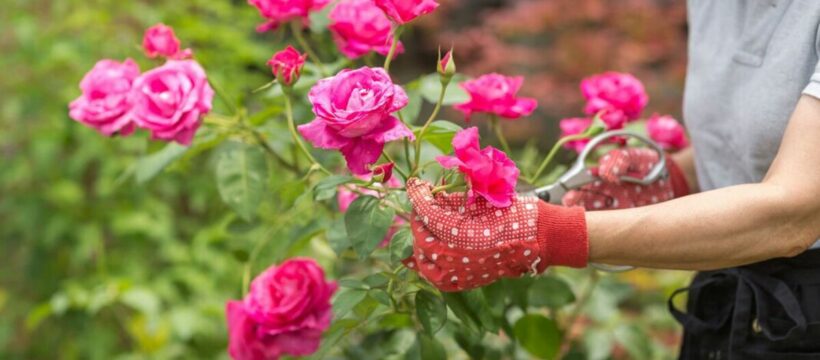B&Q shares how to prune roses in spring
Pruning is one of the most important gardening jobs, done throughout the year to help promote flowering and health in plants, flowers and trees.
However, it is important gardeners don’t prune all types of plants all at the same time as different plants have different times they need pruning.
If certain plants are pruned at the wrong time, this could permanently damage what they are pruning.
Morris Hankinson, founder and managing director at Hopes Grove Nurseries has shared which plants should be pruned now before the end of the month.
1. Spring/early season shrubs
When many garden plants are just waking up and beginning to come into growth, the expert explained that some shrubs such as forsythia are already well out of the starting blocks and in full flower.
READ MORE: ‘Cheap’ household method to get rid of weeds so ‘they don’t come back’[LATEST]

He said: “So, by June they have finished flowering, and it’s time to prune them so that a good show of flowers is assured next spring. Shrubs such as forsythia, weigela, spiraea snowmound, deutzia and amelanchier should be pruned now.”
Morris claimed that it’s easy as next year’s flowers will appear in this year’s young green shoots, so leave these young shoots and prune out the old branches that had flowers on this year.
At the same time shrubs like dogwood and willow that are grown for their colourful winter stems can be cut back to ground level if they haven’t been already. The expert said: “The new young stems that grow over the summer will be the colourful stems for next winter.”
2. Roses
Gardeners will find that these will be flowering beautifully in their gardens now. However, to keep them flowering it pays to deadhead (i.e. prune very gently) them regularly.
Don’t miss…
7 ‘drought-tolerant’ plants to keep gardens looking ‘vibrant’ during hot weather[EXPERT]
Four ‘effective and natural’ methods to stop cats pooing in gardens[INSIGHT]
‘Important’ guide to prune lavender for a ‘healthy and beautiful’ plant[TIPS]

We use your sign-up to provide content in ways you’ve consented to and to improve our understanding of you. This may include adverts from us and 3rd parties based on our understanding. You can unsubscribe at any time. More info
Morris said: “That way they won’t produce hips and put energy into making seeds, instead they will produce more flowers through the summer.”
3. Hedges
These can be cut once a year in the second half of the summer at which time they hopefully won’t grow any more. The downside is that gardeners will probably have an awful lot of tough, woody trimmings to get rid of.
The gardening guru instructed: “Cut them in June and there will be a lot less and it will be soft and ideal for adding to your compost heap, or at least much easier to cram into your brown wheelie bin.”
4. Wisteria
When this plant has finished growing (usually by the end of June), Morris recommends simply cutting the long new shoots back to six leaves to leave a spur, these spurs will produce next year’s flowers.

He said: “This will tidy up your wisteria enormously and any wayward stems can be tied in at the same time. Pruning stage two is after Christmas, simply shorten the spurs back further to three buds and it will flower beautifully.”
5. Winter/spring flowering clematis
Clematis armandii is a “magnificent winter flowering variety”, but after flowering they can look a little scraggy so this is a good time to tidy them up.
Morris noted that no particular pruning is required for these flowers next winter – this is purely a “cosmetic haircut”.
When it comes to clematis montana, once their flowers have faded it’s a “great time” to tidy them up. The expert explained: “Once again, it’s rather cosmetic, they tend to grow very fast and so overgrown ones need to be tamed. The good news is that they respond well to drastic pruning, so don’t be afraid to get stuck in if it’s overgrown its spot.”
Source: Read Full Article
